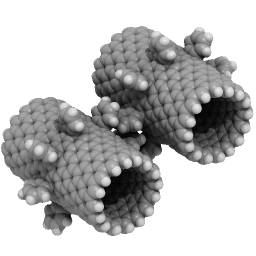How to make single-walled and multi-walled nanotubes by Electrical Arc Discharge (based on nano-micro-electronics PHD)
Researcher and author PhD student: Afshin Rashid
Note: Carbon nanotubes are generally produced in three main ways (Electrical Arc Discharge): electric arc discharge; laser ablation (Cation Vapor Deposition);
Each of the three types of nanotubes has properties due to its specific atomic arrangement.
(Electrical Arc Discharge) The discharge of an electric arc in the construction of a carbon nanotube
In this method, direct current is used between two carbon electrodes in an inert gas atmosphere such as argon or helium . The distance between two carbon electrodes is about a few millimeters and an electric current of about 100 amps is applied to the electrodes. This will cause the carbon to evaporate as hot plasma. The resulting steam will then condense , forming carbon nanotubes in some areas. It should be noted that when an electric arc is established, one of the electrodes evaporates and the resulting steam settles on the other electrode. The formation of nanotubes occurs only at the pole, where the current comes out, the voltage of about 20 volts will maintain the temperature between the two electrodes at about two to three thousand degrees Celsius. The gas pressure in this method is between 500 and 700 ml.
Chemical Vapor Deposition in the manufacture of carbon nanotubes
CVD is a vapor-based method in which vapor particles settle on a substrate as a result of the decomposition of gaseous reactants , producing products such as solid thin layers , nanoparticles, nanotubes, and nanowires. The use of lasers and plasmas to generate the thermal energy needed to decompose gaseous reactors creates different modes of chemical vapor deposition. CVD, due to its special advantages, is a suitable method for the deposition of thin layers, nanotubes and nanoparticles. These benefits include relatively simple equipment, thin layer uniformity, high layer density, high sedimentation rate , and the ability to produce large quantities of products.
The most important physical property of nanotubes is their electrical conductivity. The electrical conductivity of nanotubes varies completely from one angle to another, depending on the angle and type of bonds; each atom vibrates in its own position when an electron or (electric charge) enters a set of atoms. The vibrations of the atoms increase and they transfer the incoming electric charge by colliding with each other.
Conclusion :
The higher the order of the atoms, the greater the electrical conductivity of those nanotubes. The classification is based on the order of the carbon atoms in the nanotube and therefore their conductivity; for example, carbon nanotubes with graphene strips are 1000 times more conductive than copper, while the semiconductor property of nanotubes depends on their type. The extraordinary properties of nanotubes and their complex production methods have led to many nano-electrical applications.
Author: PhD Student ( Afshin Rashid)





